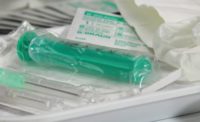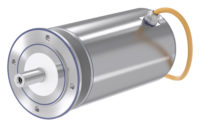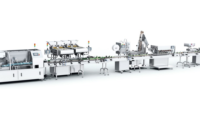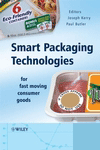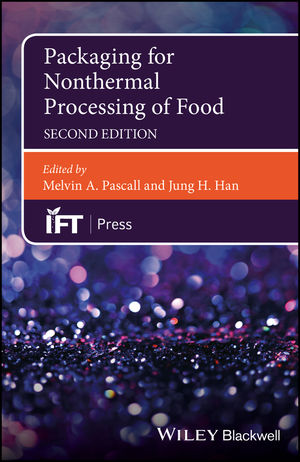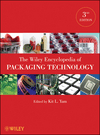Celebrating Sterile Packaging Day with Dr. Henk Blom and Marie Tkacik

Sterile Packaging day includes those manufacturers who produce the sterilization packaging. Image courtesy of JC Gellidon via Unsplash

Marie Tkacik, SPMC technical committee member. Image courtesy of the Sterilization Packaging Manufacturers Council

Dr. Henk Blom, chair of SPMC’s technical committee. Image courtesy of the Sterilization Packaging Manufacturers Council


The past year has revealed many heroes across the healthcare spectrum. This group goes beyond the developers of medical devices and pharmaceuticals to include those manufacturers who produce the sterilization packaging to deliver the life-saving products, and their critical role in patient safety.
To recognize the important role of the supply chain, the Sterilization Packaging Manufacturers Council (SPMC) has organized the inaugural Sterile Packaging Day, which celebrates and recognizes all partners in the medical device supply chain who work collaboratively and seamlessly to deliver medical devices in a sterilized and safe manner to healthcare professionals and ultimately patients.
This year Sterile Packaging day is March 10th. We sat down with Dr. Henk Blom, chair of SPMC’s technical committee, and SPMC technical committee member Marie Tkacik, to learn more about SPMC and innovation in medical packaging.
What is the history of SPMC?
Tkacik: SPMC was founded in June of 1994 by members of the Flexible Packaging Association (FPA) to create universal standards for the sterile packaging of medical products and devices to promote enhanced patient safety. SPMC member companies are market and technical leaders in the field and collaborate to establish workable and pragmatic standards. Much of SPMC's work has been incorporated into AAMI and ISO standards and into ASTM International standards, which have been accepted by the Food & Drug Administration (FDA) as Consensus Standards.
Tell us more about Sterile Packaging Day.
Blom: It has been a tough year since the beginning of COVID-19 and there are many on the front lines who are battling for an ultimate victory over this global scourge. Sterile Packaging Day has been created to recognize and thank all of these fighters who have tirelessly collaborated to deliver safe and sterile medical products to those in dire need of the essential devices to win the war over COVID and other health conditions. The event not only honors the people involved in our industry but also raises the consciousness of three important packaging principles: patient safety, peace of mind, and supply chain strength. March 10th provides an opportunity to celebrate our industry’s work and strengths and re-pledge our credo to who we humbly serve — “Our Patients’ First.”
How do sterile packages preserve medical devices?
Tkacik: Medical packaging not only keeps products sterile, but its design also affects its shelf life and effectiveness. Proper packaging design and material selection are essential. A medical device needs go through an extensive validation process and the packaging must protect the critical sterile barrier integrity while safeguarding the device.
How do you give those who use the device peace of mind with your packaging?
Blom: Protecting patients’ health and safety is always our industry’s first priority. In this respect, medical packaging must meet a long checklist of essentials, including strict compliance with regulations, ease of use for patients and caregivers, compatibility with vetted sterilization methods and safe and efficient manufacturing. Consumers should intuitively respect this process and trust that the packaging has performed its critical function in delivering the medical product in its most effective state to the patient.
What considerations have you had to consider given there’s a drive towards increased sustainability?
Tkacik: Our ability to package and protect healthcare products must be evaluated first for product protection, maintenance of sterility and aseptic presentation. This is the primary goal, which can then lead to environmentally sound decisions in the selection and processing of those materials. Medical device companies may also guide selection of materials and design based on available options for end-of-life removal and destruction of the packaging to recover the components with a lower consumption of resources. The manufacture use and removal of these materials invariably have a broad environmental impact that medical device companies are driven to address.
There are a variety of initiatives that are underway and being proposed for consumer goods packaging. However, the demands placed on many types of healthcare packaging preclude some of these sustainable initiatives. The mantra of “Reduce, Reuse, and Recycle” is severely limited by FDA and EU regulatory requirements for healthcare packaging. For example, there are significant restrictions on reuse or recycling of materials for healthcare products and their packaging. Compostable packaging materials are currently unlikely candidates for healthcare packaging due to concerns about shelf-life limitations and sterilization compatibility.
On a more positive note, continued advances in materials may continue to make it possible to achieve a more environmentally responsible package at the critical level of performance needed to protect a given device.
What kind of challenges are packaging engineers for medical devices facing today and how will Sterile Packaging Day help to overcome them?
Blom: Unfortunately, engineers are the last ones to be called in on medical device development projects. Sterile Packaging Day will broadly communicate the message that packaging is critical and aims to elevate packaging engineers in the product development cycle. Furthermore, we will be providing education to packaging engineers through a series of webinars that have help them in their roles as well as FAQ on material storage and handling, infographics and more.
What advances can we expect in medical packaging coming down the track?
Tkacik: Making a package user-friendly so that the product is easier to use is more important than ever. This includes new thinking on how the patient sees the product, the printing on the label, and how the packaging is opened to free the product for immediate patient use.
For additional information about Sterile Packaging Day, go to www.sterilizationpackaging.org/sterile-packaging-day. A Sterile Packaging Day media toolkit is available to help the industry amplify the awareness.
Looking for a reprint of this article?
From high-res PDFs to custom plaques, order your copy today!




